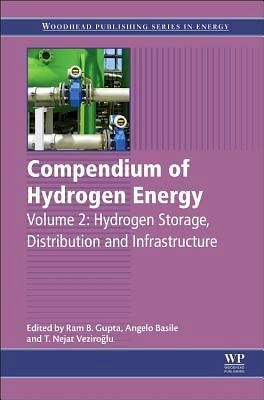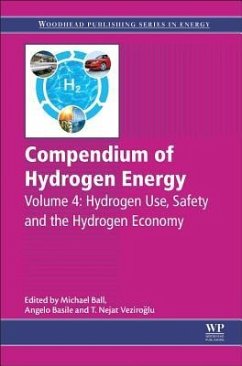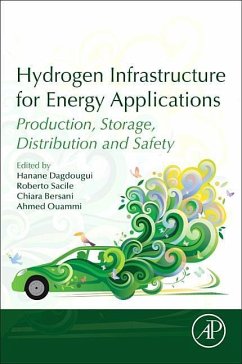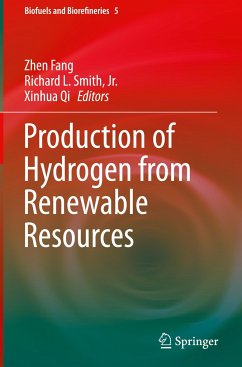
Compendium of Hydrogen Energy
Hydrogen Storage, Distribution and Infrastructure
Herausgegeben: Gupta, Ram K.; Basile, Angelo; Veziroglu, T. Nejat

PAYBACK Punkte
69 °P sammeln!
Compendium of Hydrogen Energy, Volume 2: Hydrogen Storage, Distribution and Infrastructure focuses on the storage and transmission of hydrogen. As many experts believe the hydrogen economy will, at some point, replace the fossil fuel economy as the primary source of the world's energy, this book details hydrogen storage in pure form, including chapters on hydrogen liquefaction, slush production, as well as underground and pipeline storage.Other sections in the book explore physical and chemical storage, including environmentally sustainable methods of hydrogen production from water, with final...
Compendium of Hydrogen Energy, Volume 2: Hydrogen Storage, Distribution and Infrastructure focuses on the storage and transmission of hydrogen. As many experts believe the hydrogen economy will, at some point, replace the fossil fuel economy as the primary source of the world's energy, this book details hydrogen storage in pure form, including chapters on hydrogen liquefaction, slush production, as well as underground and pipeline storage.
Other sections in the book explore physical and chemical storage, including environmentally sustainable methods of hydrogen production from water, with final chapters dedicated to hydrogen distribution and infrastructure.
Other sections in the book explore physical and chemical storage, including environmentally sustainable methods of hydrogen production from water, with final chapters dedicated to hydrogen distribution and infrastructure.













